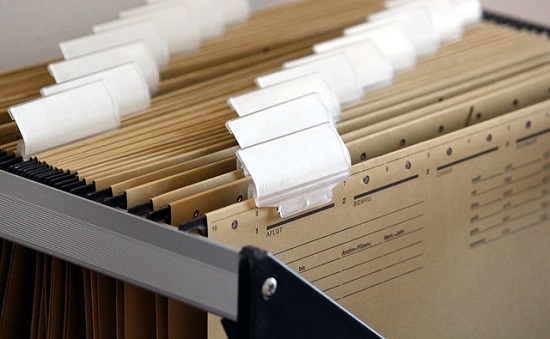Despite his being appointed by Donald Trump, Jerome Adams is no fool.
As the current Surgeon General of the United States, he recognizes that it’s time for the country to step into the 21st century already and get to the job of marijuana reclassification.
And though he doesn’t take a clearcut stance on legalizing it recreationally, he does recognize that it’s purely draconian thinking that keeps marijuana trapped in a Schedule I classification.
Which is ludicrous.
Here Is How Drug Classification Works
Or perhaps more accurately, how it doesn’t work.
The U.S. Drug Enforcement Administration (DEA) classifies drugs, substances and certain chemicals used in the production of drugs into five categories. They call these “schedules,” because why not make it more confusing?
Anyhow, the drugs are classified depending on their acceptable medical use, as well as the potential for someone to abuse or become addicted to them. Marijuana sits firmly in Schedule I, where it hangs out with the likes of heroin, LSD, ecstasy and peyote. The drug schedule changes with the abuse potential, landing at Schedule V (5), which represent the drugs that are least likely to be abused.
So if you’re following along, that means that Schedule I drugs have the highest potential for abuse and dependence. But to compare marijuana with heroin is like comparing a fine scotch with rot-gut bathtub gin. What’s more, if the FDA has already approved cannabis for medical use, then how can marijuana still be considered a Schedule I?
It’s a rhetorical question, of course.
But here’s what’s even more FUBAR. Schedule II drugs include Vicodin, cocaine, methamphetamine, OxyContin, fentanyl and a slew of other highly addictive substances. So according to the DEA, marijuana is more dangerous than opioids.
Yeah, okay.
But the DEA Is Getting Woke
They’re ever so slowly stirring.
After pressure from the FDA and HHS, the DEA did finally reschedule FDA-approved cannabis-derived Cannabidiol (CBD) to a Schedule V – provided it has no more than 0.1% THC. Of course, the whole process has been a game of Pong between the agencies since.
At least hemp has FINALLY been removed from the Controlled Substance Act and is legal. This happened with the latest Farm Bill, which also set out to define how cannabinoids, extracts and derivates of CBD can now be considered legal.
And the FDA has approved cannabinoid oil and other derivatives of the cannabis plant to treat symptoms for everything from anxiety, to cancer, to epilepsy. They’re looking further at cannabinoids as a non-opioid pain relief option- given that the country is looking at an undeniable opioid epidemic.
There are still greater measures that need to be taken though.
The United States Lags behind
Once upon a time (the 1960s) in Israel, scientists began to study the unique chemistry of the cannabis plant. By 2006, the Israeli government set a program in place for administering medical cannabis. Doctors there are free to encourage its use as an effective alternative for pharmaceuticals. And they do just that.
Meanwhile, if a doctor in the U.S. tried to pull that off in 2006, s/he would have been putting him- or herself in danger of a malpractice law suit. This is due largely to our antiquated and arcane anti-cannabis laws. And efforts to further research this complicated plant have been paralyzed by these laws and the regulations that accompany them.
Which is utter nonsense.
The cannabis plant is made up of hundreds of different chemical entities that are solely proprietary to it. And some of these chemicals have been proven to provide relief across a huge array of health conditions – with minimal side effects. This is a win-win situation.
Plus, it’s far more cost-effective than pharmaceuticals. Which brings us to our next point:
The Financial Benefits of Marijuana Reclassification
Unfortunately, in a capitalistic society, it eventually comes down to money. So allow us to speak American here for a moment.
While we can assume that Jerome Adams stance to reclassify marijuana was focused on the health benefits, there are definite financial gains here. This is known as the “green rush.”
The U.S. could be instrumental in this green rush – capturing millions in tax revenue and giving the economy a huge pat on the back. America could be leading on the side of scientific innovation as well. But as it stands now, the U.S. is taking a gamble being left behind as the global market grows more sophisticated.
In June, Canada – ever more progressive than the U.S. – became the second nation in the world to fully legalize cannabis. They’ve experienced global surges in stocks and private sector deals with pharmaceutical companies to research and distribute medical marijuana.
Meanwhile, Israel and China see the benefits of allocating federal funds for cannabis research. Their innovations could quite possibly give them control of the entire global market for pain relief just within the world’s aging population. Such research also primes them to make medical breakthroughs for rare and chronic diseases.
But the U.S. is missing out on all of this. Which seems, to us, like a form of madness far worse than the reefer variety.
Reclassifying Marijuana Is Long Overdue
Getting marijuana reclassified is a step toward reversing the harsh and prohibitive laws that make research so difficult. And that research is essential to make cannabis chemistry into viable human medicine.
So until marijuana prohibition comes to an end, we just have to take every victory as a step in the right direction. Baby steps, y’all.
In the mean time, if you’re in the cannabis business and want to get a wider reach, contact us today. We’re here to help you, so that you can help others.
